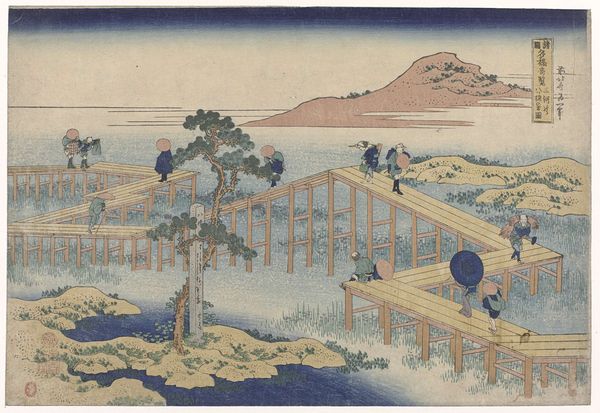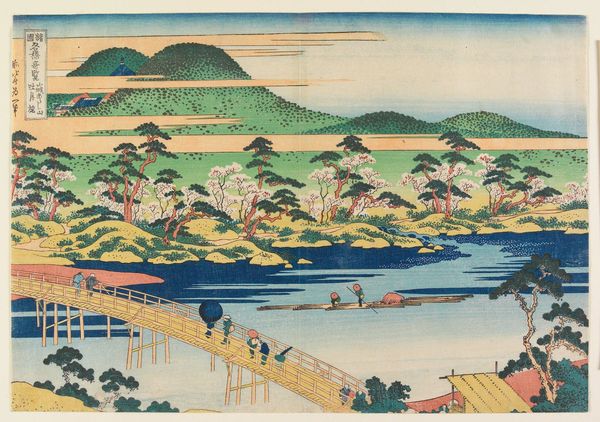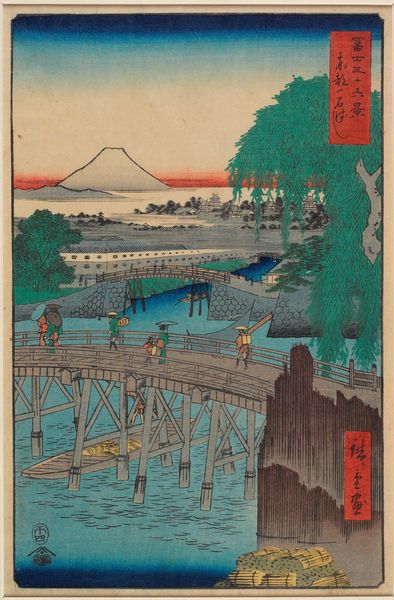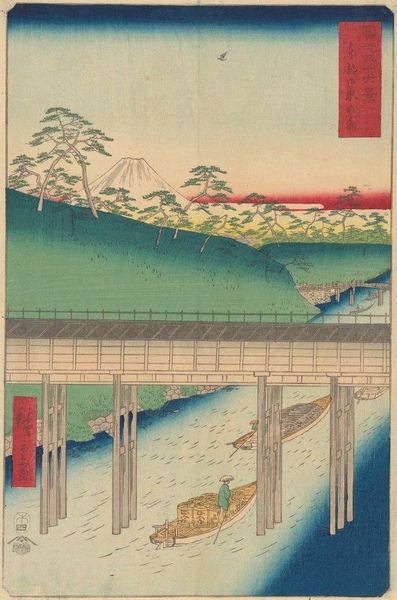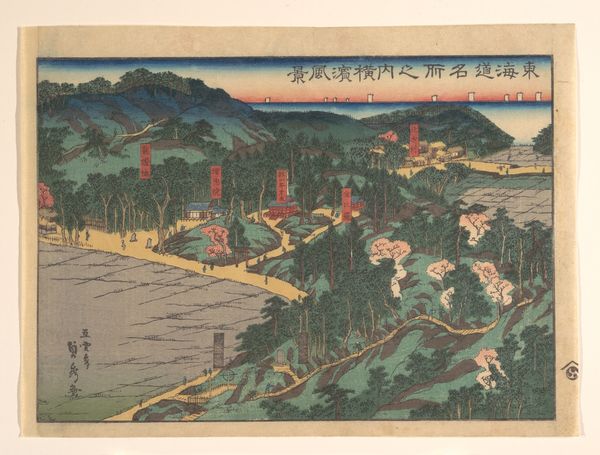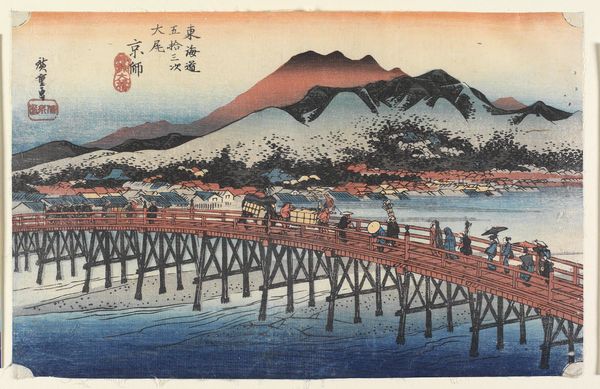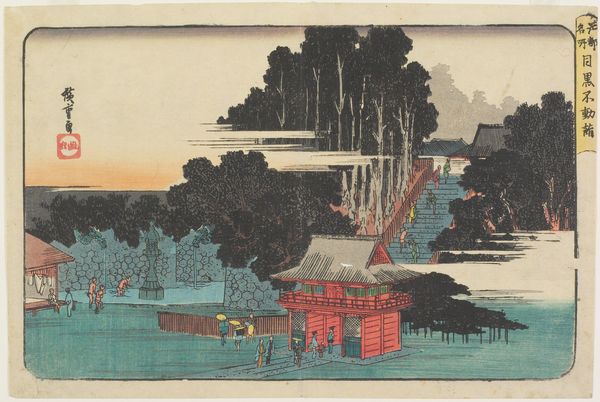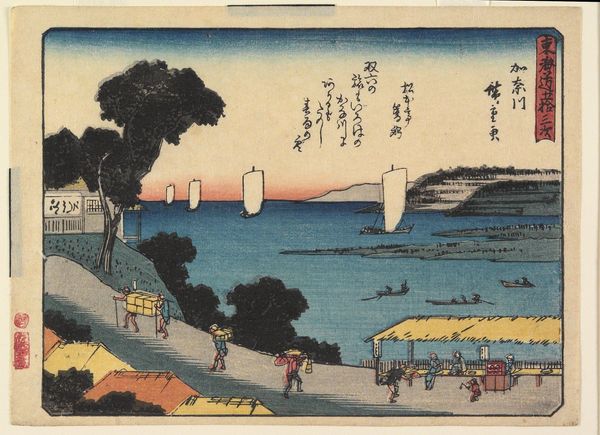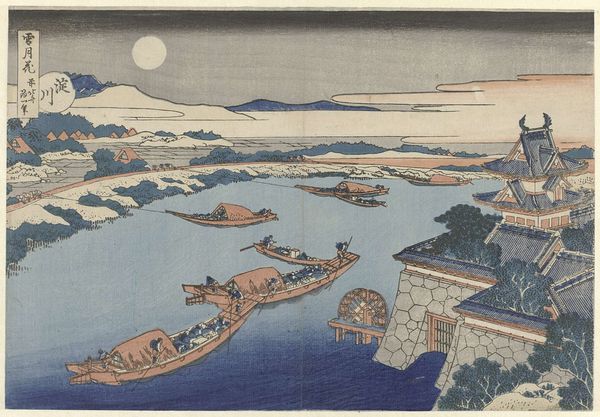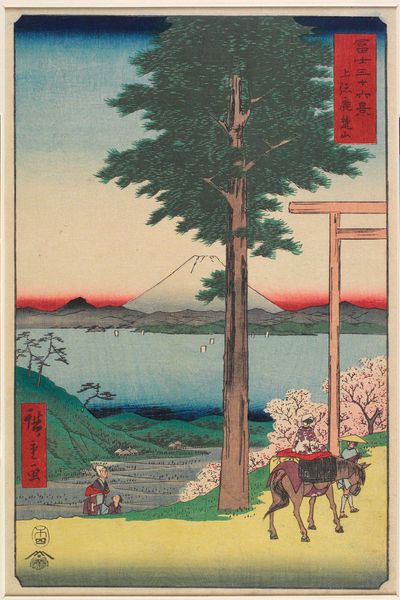
Old View of the Eight-part Bridge at Yatsuhashi in Mikawa Province c. 1834
0:00
0:00
print, ink, woodblock-print
# print
#
asian-art
#
landscape
#
ukiyo-e
#
ink
#
woodblock-print
Dimensions: 9 5/8 × 14 in. (24.4 × 35.6 cm) (image, sheet, horizontal ōban)
Copyright: Public Domain
Editor: This woodblock print, "Old View of the Eight-part Bridge at Yatsuhashi in Mikawa Province" by Katsushika Hokusai, made around 1834, offers a unique perspective. The bridge's sharp angles create this maze-like effect and really dominates the composition. What is particularly striking about this work, at least to me, is its snapshot-like feel—a bustling scene captured mid-motion. How do you interpret this work within its historical context? Curator: It’s interesting you note that snapshot feel. Hokusai, working within the ukiyo-e tradition, was deeply influenced by the social and cultural shifts of the Edo period. Prints like this, while depicting landscape, weren't merely about scenery. They were about access—allowing a burgeoning middle class to vicariously experience famous places and narratives. What do you think the choice of the eight-part bridge tells us about that? Editor: Well, perhaps it represents connection? Visually it links different segments of the landscape together while portraying merchants moving between them. Curator: Precisely. Bridges have historically held huge symbolic value; this bridge specifically was written about in the Tales of Ise as a liminal location in the story. The government sought to exert cultural dominance and social order; therefore the bridge becomes a physical representation of social, commercial and intellectual exchange as Japan moved to create it’s identity. This accessibility shaped public opinion and propagated information. Consider, also, the use of color. The deliberate contrast –the soft blues, the vibrant orange-red hues, draw our attention to both the journey and the landscape itself. This choice catered to public tastes and commercial appeal, reflecting the complex interplay of artistic expression and market forces. Editor: So, in a sense, Hokusai isn't just showing us a place, but also documenting—perhaps even shaping—the cultural identity of his time? Curator: Absolutely. The ‘Old View’ reflects how imagery, patronage, and cultural values intertwine. We learn about landscape and society and it helps me think more critically about the role of art in mediating our understanding of the world. Editor: I never considered the social role of landscape art before in this way. It changes how I look at the piece. Thanks!
Comments
No comments
Be the first to comment and join the conversation on the ultimate creative platform.
